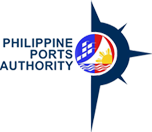16 JANUARY 2023, MANILA — Eliminate container deposits and manage empty containers— these are the two primary purposes of the controversial Trusted Operator Program- Container Registry and Monitoring System (TOP-CRMS) that some business groups are opposing. The resistance, supposedly based on the fear that the program would inflate the cost of logistics is far from the actual benefits it can bring to the table.
TOP-CRMS is the solution
PPA's TOP-CRMS uses technology for up-to-date container tracking allowing customers, carriers, freight forwarders, and shippers to access the status of their cargoes and containers. The program is in line with the directive of President Ferdinand "Bongbong" Marcos Jr. to digitalize government processes and make them more effective and transparent for the end-users. This will streamline all the transactions at the ports in support of the Ease of Doing Business Law. In fact, in a meeting with the Private Sector Advisory Council at Malacañan Palace, the President has given the green light to proceed with the TOP-CRMS of PPA to help lower commodity prices, prevent smuggling, and improve revenue collections.
Container deposits that the shipping lines charge against truckers, custom brokers, and forwarders, have been the decade-old problems for every cargo shipment which usually costs Php 10,000 up to Php 30,000 for dry containers and up to Php 180,000 for refrigerated containers. With TOP-CRMS, these huge amounts will be reduced to a minimal Php 980 per container monitoring fee, inclusive of container deposit insurance to also address the issues of missing and damaged containers. The CRMS will also help alleviate storage problems at ports and prevent port congestion through the provision of shared facilities for empty containers as it aims to address the congestion not only inside terminals but also along access roads going in and out of the ports particularly during holiday seasons.
Ports as regulated environments
Under Presidential Decree No. 857, it is PPA’s mandate to manage and monitor the entry, exit, re-entry and re-export of containers at PPA-administered ports. The PPA is in constant communication and coordination with the Bureau of Customs (BOC) and does not encroach on the function of the latter. The BOC’s Electronic Tracking of Containerized Cargo (E-TRACC) monitoring system is limited only to containerized cargoes using GPS enabled electronic locks bound to limited destinations; Custom Facilities and Warehouses (CFW) and PEZA zones, while PPA’s mandate is to manage cargo traffic in its terminals and avoid port congestion. While BOC and PPA have their own respective mandates, sharing of data in order to provide a whole-of-government approach to solving national problems such as smuggling should not be frowned upon but, on the contrary, encouraged.
TOP-CRMS will keep a registry and monitor all inbound shipping containers that will track every foreign-owned container’s location and movement using the industry- accepted data interchange formats through encrypted channels. While the PPA does not claim the TOP-CRMS will solve all the problems in smuggling, the data generated from the system might help the other government agencies in their drive to curb this long-standing problem that has resulted in billions of lost revenues to the government, not to mention the unfair practices committed against domestic producers. The objective of PPA is to provide additional support by solidifying clear jurisdiction and cooperation with equally mandated government agencies.
Not a duplication of function
During the consultation on the Implementing Operational Guidelines of PPA Administrative Order 04-2021, BOC expressed support to the system. The mandate and interests of BOC are specific to cargo and identification of implements used to transport cargo from ports of origin, shipments, and port of destination. Streamlining does not mean any government agency will forego its mandate and subsume authority under another agency.
Although TOP-CRMS is not primarily intended as an anti-smuggling system, the TOP-CRMS can thwart cargo diversion which is a common tool for smuggling schemes. With this real-time tracking, law enforcers can now eliminate the fake consignees and prevent additional charges. After all, addressing smuggling should be an orchestrated effort.
Lowering of costs
The first public consultation this year on January 4 revealed that there are huge hidden charges imposed by some shipping lines that are not transparent to the public, charges that result in layers of costs, thus contributing to the bloated trading costs down to the end users and eventually contributing to the higher prices of commodities. Not only did the public consultation expose the ambiguity of shipping line charges but it also pointed out that there is really a dire need for a uniform and systematic container monitoring system. With the TOP-CRMS, the Php 980 container monitoring fee inclusive of container deposit insurance and the Php 3,408 empty container handling service fee (for its first 3 days at PPA-designated empty container yards) will be in lieu of the more costly container deposit fees amounting up to Php 30,000 (or even Php 180,000 for refrigerated containers).
Aside from container deposits, the TOP-CRMS under its proposed shared staging facility for empty containers will likewise address concerns on detention charges, container imbalance charges, peak season charges, and the like.
While some business groups are opposing the TOP-CRMS which will help promote transparency and lessen business costs, PPA would like to take a stand for the underprivileged and under represented segment of the logistics sector, namely, the truckers, brokers, and stakeholders that will benefit from this whole-of-government approach of digitalization through the TOP-CRMS.
###



